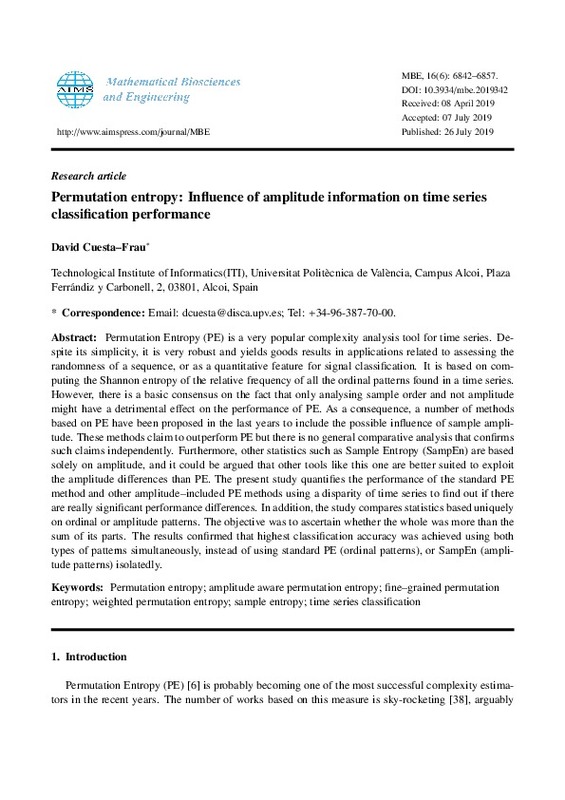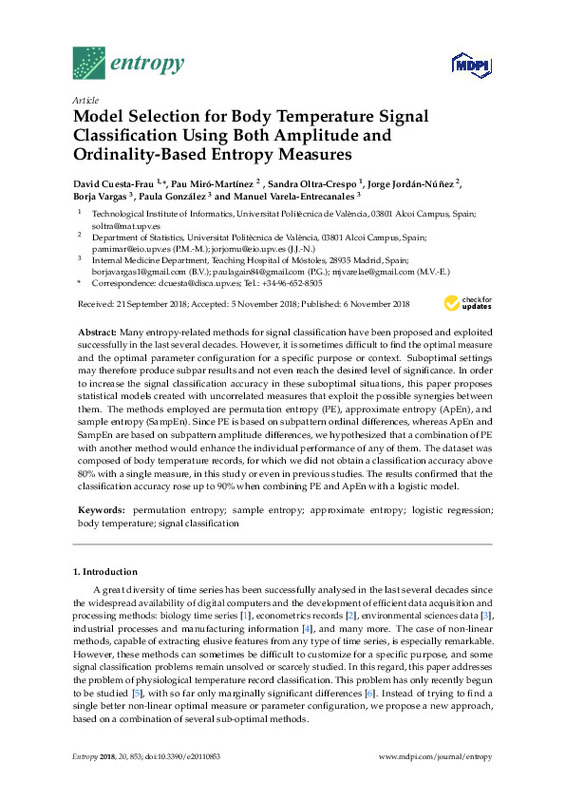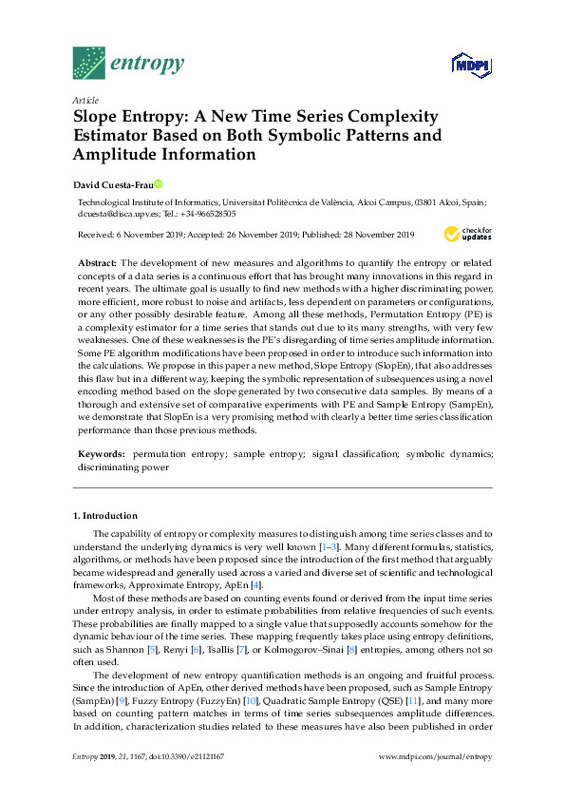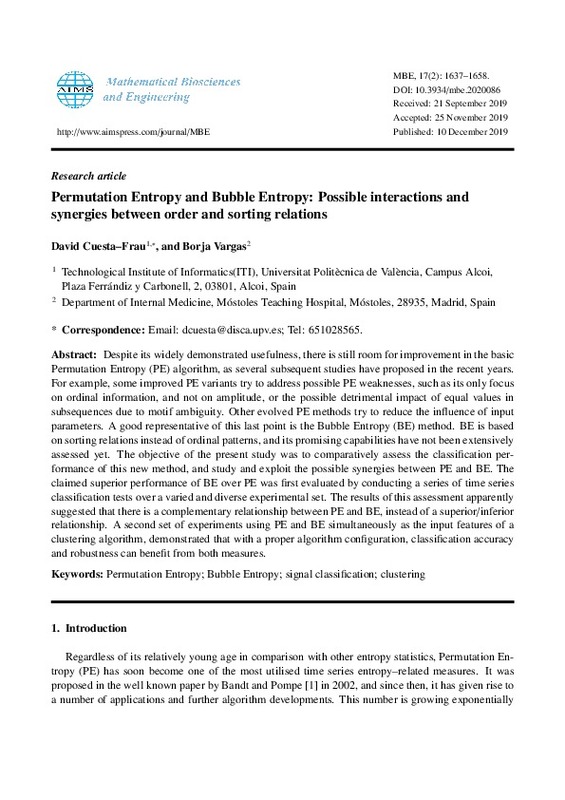JavaScript is disabled for your browser. Some features of this site may not work without it.
Buscar en RiuNet
Listar
Mi cuenta
Estadísticas
Ayuda RiuNet
Admin. UPV
Permutation entropy: Influence of amplitude information on time series classification performance
Mostrar el registro sencillo del ítem
Ficheros en el ítem
| dc.contributor.author | Cuesta Frau, David
|
es_ES |
| dc.date.accessioned | 2021-01-19T04:31:50Z | |
| dc.date.available | 2021-01-19T04:31:50Z | |
| dc.date.issued | 2019 | es_ES |
| dc.identifier.issn | 1547-1063 | es_ES |
| dc.identifier.uri | http://hdl.handle.net/10251/159336 | |
| dc.description.abstract | [EN] Permutation Entropy (PE) is a very popular complexity analysis tool for time series. Despite its simplicity, it is very robust and yields goods results in applications related to assessing the randomness of a sequence, or as a quantitative feature for signal classification. It is based on computing the Shannon entropy of the relative frequency of all the ordinal patterns found in a time series. However, there is a basic consensus on the fact that only analysing sample order and not amplitude might have a detrimental effect on the performance of PE. As a consequence, a number of methods based on PE have been proposed in the last years to include the possible influence of sample amplitude. These methods claim to outperform PE but there is no general comparative analysis that confirms such claims independently. Furthermore, other statistics such as Sample Entropy (SampEn) are based solely on amplitude, and it could be argued that other tools like this one are better suited to exploit the amplitude differences than PE. The present study quantifies the performance of the standard PE method and other amplitude-included PE methods using a disparity of time series to find out if there are really significant performance differences. In addition, the study compares statistics based uniquely on ordinal or amplitude patterns. The objective was to ascertain whether the whole was more than the sum of its parts. The results confirmed that highest classification accuracy was achieved using both types of patterns simultaneously, instead of using standard PE (ordinal patterns), or SampEn (amplitude patterns) isolatedly. | es_ES |
| dc.language | Inglés | es_ES |
| dc.relation.ispartof | Mathematical Biosciences and Engineering | es_ES |
| dc.rights | Reconocimiento (by) | es_ES |
| dc.subject | Permutation entropy | es_ES |
| dc.subject | Amplitude aware permutation entropy | es_ES |
| dc.subject | Fine-grained permutation entropy | es_ES |
| dc.subject | Weighted permutation entropy | es_ES |
| dc.subject | Sample entropy | es_ES |
| dc.subject | Time series classification | es_ES |
| dc.subject.classification | ARQUITECTURA Y TECNOLOGIA DE COMPUTADORES | es_ES |
| dc.title | Permutation entropy: Influence of amplitude information on time series classification performance | es_ES |
| dc.type | Artículo | es_ES |
| dc.identifier.doi | 10.3934/mbe.2019342 | es_ES |
| dc.rights.accessRights | Abierto | es_ES |
| dc.contributor.affiliation | Universitat Politècnica de València. Departamento de Informática de Sistemas y Computadores - Departament d'Informàtica de Sistemes i Computadors | es_ES |
| dc.description.bibliographicCitation | Cuesta Frau, D. (2019). Permutation entropy: Influence of amplitude information on time series classification performance. Mathematical Biosciences and Engineering. 16(6):6842-6857. https://doi.org/10.3934/mbe.2019342 | es_ES |
| dc.description.accrualMethod | S | es_ES |
| dc.relation.publisherversion | https://doi.org/10.3934/mbe.2019342 | es_ES |
| dc.description.upvformatpinicio | 6842 | es_ES |
| dc.description.upvformatpfin | 6857 | es_ES |
| dc.type.version | info:eu-repo/semantics/publishedVersion | es_ES |
| dc.description.volume | 16 | es_ES |
| dc.description.issue | 6 | es_ES |
| dc.identifier.pmid | 31698591 | es_ES |
| dc.relation.pasarela | S\401355 | es_ES |











